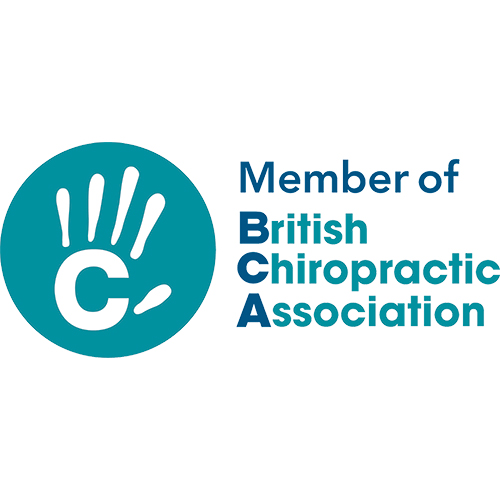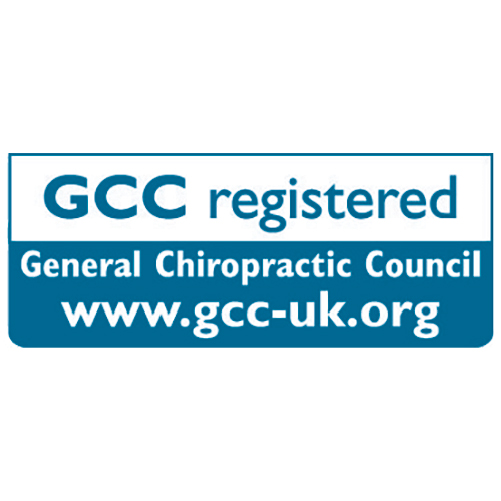Problems Treated by Chiropractic
-
Neck pain
-
Back pain
-
Rotator cuff injuries of the shoulder
-
Headache arising from the neck
-
Minor sports injuries
-
Joint aches & pains
-
Sciatica
-
Joint pain including hip & knee pain for osteoarthritis as an adjunct treatment
-
Plantar fasciitis (short term management)
-
Tennis elbow from associated musculoskeletal issues of the neck and back
-
Pregnancy related aches & pains including joint and back pain

Having used various osteopaths over the years Ruth was recommended and has proved to be of great benefit to my back health. I’m now in the best shape in years. I must remember to keep up with the exercises!! Thanks – Rich H
Not Sure if Chiropractic can help?
Why not book a ‘Free Screening’ with the Clinic Chiropractor. This 15 minutes assessment allows you an opportunity to explain the problem(s) to the chiropractor and get an opinion on whether or not we can help. There is no obligation to book an appointment after the Free Screening.
Have a Question?
Go to FAQ or Contact Us with your questions directly
Neck Pain
Neck pain is very common. Most people with neck pain suffer from what is known as ‘simple’ or ‘mechanical’ neck pain. This means that the pain is not related to any serious underlying condition and there are no trapped nerves. Muscles, joints and ligaments can all be involved. Simple neck pain can be caused by poor posture, sleeping patterns, awkward sitting positions or tension in the neck or shoulders.
Less frequently, the nerves in the neck can become compressed or irritated. There can be many reasons why this happens, but damaged discs or wear and tear can lead to pain spreading to the shoulder and arm. This can be accompanied by pins and needles, tingling, numbness and weakness in all or part of the arm or hand.
Although it can be painful, neck pain rarely has a serious underlying cause. A qualified health practitioner such as a chiropractor, experienced in diagnosing and treating conditions of the spine, can also identify if a referral or specialist investigation or alternate treatment is advisable.
Back Pain
Back pain is very common. Most people will suffer one or more episodes of back pain during their lives. In many cases, it starts suddenly and gets better quickly, without the need for treatment. However, back pain can be painful, debilitating and persistent, and some people suffer repeated episodes. It may start following a specific incident or it may develop gradually. It can also be associated with other symptoms such as leg pain or sciatica.
Your spine is one of the strongest parts of your body. It is made of solid blocks of bone known as vertebra, joined together by soft pads or discs which act as shock absorbers and maintain flexibility. The spine is reinforced by strong ligaments, surrounded by powerful muscles for support.Simple back pain can be caused by poor posture, prolonged sitting in uncomfortable or awkward positions, and/or muscular tension due to work-related stressors.
As we get older, wear and tear may contribute to back pain. The shock-absorbing pads (or discs) between the bones of the back can narrow with age and this can cause stiffness, pain and cause difficulty moving.
Although it can be painful, back pain rarely has a serious underlying cause. Seeing a qualified health professional, such as a chiropractor, who is experienced in diagnosing and treating conditions of the back and spine, will also identify if a referral or specialist investigations are needed.
Cervicogenic headache
Cervicogenic headache is a headache related to neck problems that often begins at the top of the neck and moves into the head. Signs and symptoms can include headache relating to neck movement, pain on pressure over the upper neck or the base of skull regions and restricted neck range of movement with worsening headache. You may also experience one-sided neck and or shoulder and arm pain. Episodes can be of varying duration.
Sciatica
Simple back pain is relatively common. Less frequently, the nerves of the back can sometimes become irritated, compressed or trapped. There can be many reasons for this but irritated discs or wear and tear can lead to pain spreading down the leg, which is commonly referred to as ‘sciatica’. This can be accompanied by pins and needles tingling, numbness and weakness in all or part of the leg and foot. If the pain does not go after a few days, or starts to get worse, it is worth seeking professional advice. Early treatment will help you get better faster.
The National Institute for Health and Care Excellence (NICE) guidelines (2016) state:
“Consider manual therapy (spinal manipulation, mobilisation or soft tissue techniques such as massage) for managing low back pain with or without sciatica, but only as part of a treatment package including exercise, with or without psychological therapy.”
Shoulder problems
Shoulder impingement is a very common cause of shoulder pain, where a tendon (band of tissue) inside your shoulder rubs or catches on nearby tissue and bone as you lift your arm. It can affect the rotator cuff tendons, which is rubbery tissues that connect the muscles around your shoulder joint to the top of your arm.
An impinging shoulder will often improve in a few weeks or months, especially with the right type of shoulder exercises, but occasionally it can be an ongoing problem.
Shoulder impingement can start suddenly or come on gradually. Symptoms can include: pain in the top and outer side of your shoulder, pain that’s worse when you lift your arm, especially when you lift it above your head, pain or aching at night, which can affect your sleep, and or weakness in your arm. Your shoulder won’t usually be stiff.
Chiropractors will also examine the neck when presented with shoulder problems.
Plantar fasciits
The plantar fascia is a band of thick tissue that runs along the sole of the foot. It runs from the heel bone (calcaneum) along the inside edge of the foot to the base of the toes. Its function is to help lift the arch of the foot when walking and act as a shock absorber for the whole leg.
Plantar fasciitis is a common condition that occurs when the plantar fascia becomes inflamed and irritated near where it attaches to the heel bone. It can occur suddenly but more often it develops gradually over a period of time.
The cause of plantar fasciitis is not always clear, however, there are factors that are known to increase the risk of developing the condition. These are:
- If you are on your feet a lot of the time or do lots of walking, running and standing when this is not normal for you.
- If you have recently started exercising on a different surface.
- If you have been wearing shoes with poor cushioning or poor arch support.
- If you are overweight, this puts extra strain on the heel.
- If there is a sudden stretch to the sole of your foot.
- If you have tight Achilles tendon and calf muscle
Pain is the main symptom and can be anywhere on the underside of the heel. Pain is often worst when you take your first steps on getting up in a morning or after long periods of rest, where no weight is placed on the foot.
Gentle exercise usually helps ease the pain but being on your feet or going for a long walk often makes the pain worse.
A chiropractor will examine the surrounding structures including ankle, knee and hip areas to determine if the faciitis is connected to another issue within the kinematic chain.



